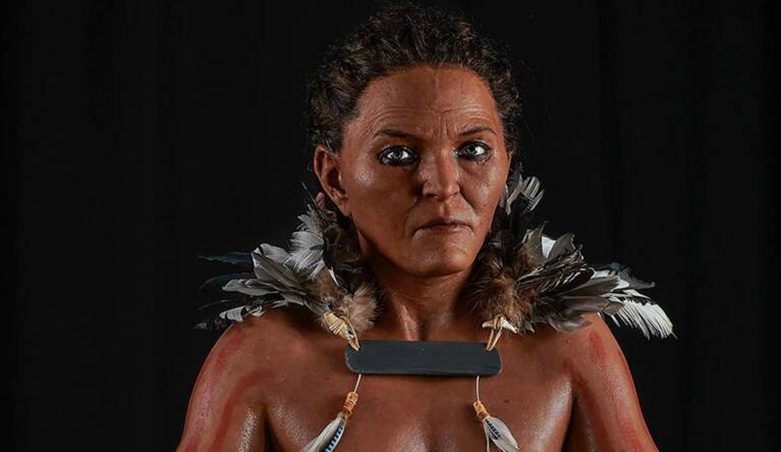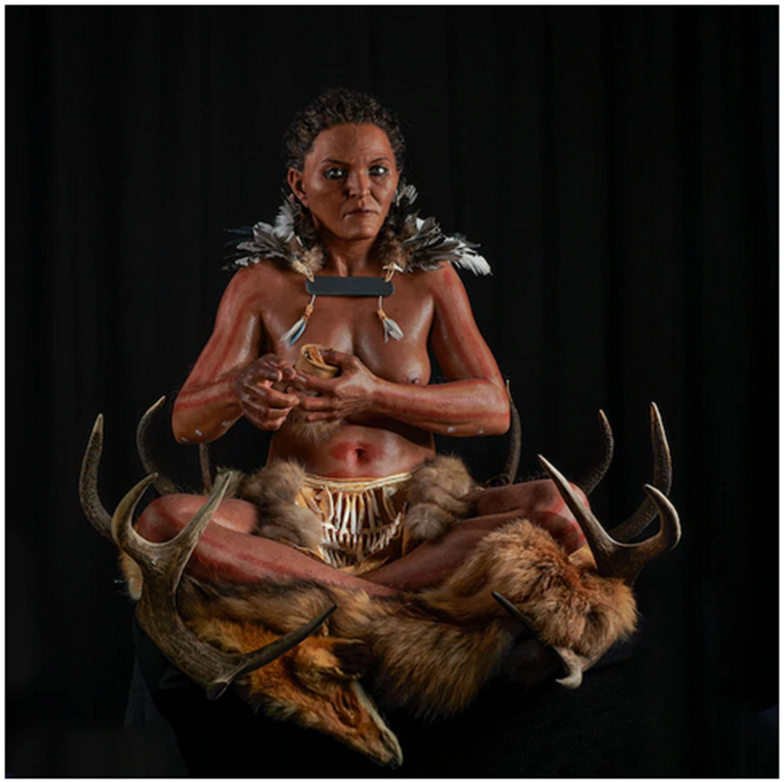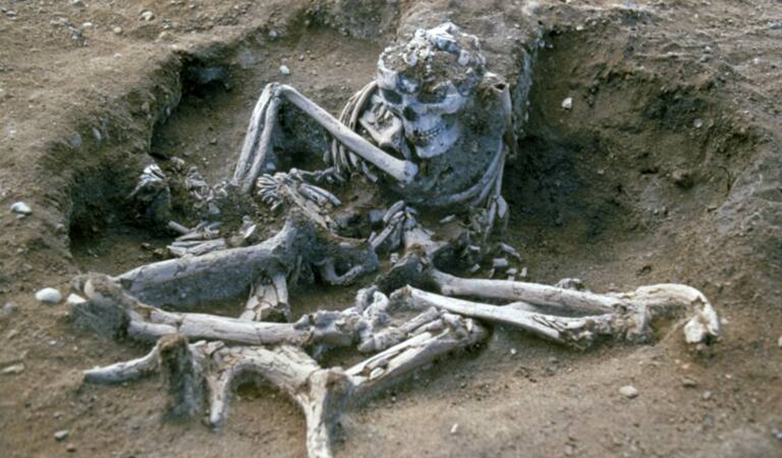Archaeologists “bring back to life” a hunter-gatherer who died 7,000 years ago in Sweden

Archaeologists have reconstructed the appearance of a hunter-gatherer from her 7,000-year-old bones.
In Sweden, archaeologists have managed to “bring back to life” a hunter-gatherer who died 7,000 years ago. From her bones discovered in the 1980s, they reconstructed her face as well as her body, providing a remarkable insight into what she looked like.
After Hilda, the druid woman from the Iron Age and SK125, the 600-year-old Scot , it is the turn of a hunter-gatherer to "come back to life". In Sweden , archaeologists used the bones of this woman who died 7,000 years ago to reconstruct her appearance. The remarkably realistic model has just been unveiled as part of an exhibition which opened at the Trelleborgs Museum.

The bones of the hunter-gatherer were unearthed in the 1980s at the Skateholm site, near Trelleborg. This place remains to this day one of the largest sets of tombs from the Mesolithic period identified in Scandinavia. More than 80 burials, dating back to between 5500 and 4600 BCE, have been discovered there.
Among them, archaeologists have revealed different types of tombs. Some of the deceased had been buried in pairs , others with dogs. This was not the case for the hunter-gatherer but her burial, named Burial XXII, showed another peculiarity which did not fail to intrigue: her body had been placed in a sitting position.

The skeleton of the hunter-gatherer in the tomb "Burial XXII" at the Skateholm site in Sweden. Trelleborgs Museum
The specialists then decided to excavate the deceased in the form of a single block transferred to their laboratories for further analysis. “ This might be the most difficult tomb we have excavated at Skateholm ,” said Lars Larsson, an archeology professor at Lund University interviewed by National Geographic .
Reconstructing a face from a skull
Examinations carried out on the bones revealed in particular that the woman was a little over 1.50 meters tall and was between 30 and 40 years old when she died. It remained to be determined what she looked like. It was the archaeologist and artist Oscar Nilsson , a specialist in reconstructions of faces from the past, who tackled this challenge.
First, he examined the skull of the deceased and created a three-dimensional replica, modeled by hand taking into account her origin, sex and age. He then reconstructed the face muscle by muscle, cartilage by cartilage before adding skin, hair, etc. The body was made of silicone and placed in a seated position, respecting the woman's size.

The reconstruction carried out by Oscar Nilsson of the back and front of the 7000 year old hunter-gatherer. Gert Germeraad/Trelleborgs Museum
The reconstruction shows the hunter-gatherer sitting cross-legged, wearing a necklace of feathers, skins and a belt made of teeth. For the color of the skin and eyes, the artist based himself on genetic analyzes of other bones from Skateholm which confirmed hypotheses about Mesolithic European populations. Namely that the individuals had dark skin and light eyes.
However, Oscar Nilsson let his imagination and his interpretation speak for certain aspects and in particular the intense expressions attributed to the Swede. " I rarely do reconstructions that have this much personality. But it is a personality ," he told National Geographic . The hunter-gatherer's role in her group is unknown, but details have suggested that she was not just anyone.

Her tomb indeed appeared particularly ornate compared to the others, particularly with the horns on which the deceased was seated. “ These things can be interpreted in many ways, but in my eyes, she is without a doubt a shaman [...] Obviously, she was a person of great importance and great dignity,” he said . – he judged.
?Hunter-gatherers by choice
Although this theory remains to be confirmed, the Skateholm burials, as well as other Mesolithic sites in the region, have made it possible to learn more about the hunter-gatherers of the time. In particular, they revealed that these communities seemed to have continued to prosper almost a millennium after the appearance of agriculture on the European continent around 9000 BCE.
According to Lars Larsson, some tombs contained resources suggesting that hunter-gatherers may have traded with the agricultural communities of Europe. So many observations which tend to shake up the belief that geographical isolation is responsible for the late arrival of agriculture in the Scandinavian regions. It could therefore rather be a choice.
“ People tend to think that hunter-gatherers were uncivilized humans ,” the archaeologist commented to National Geographic , “ but why would they want to move into agriculture when they already had a good situation in hunting, gathering and fishing? ”
Source : websites

